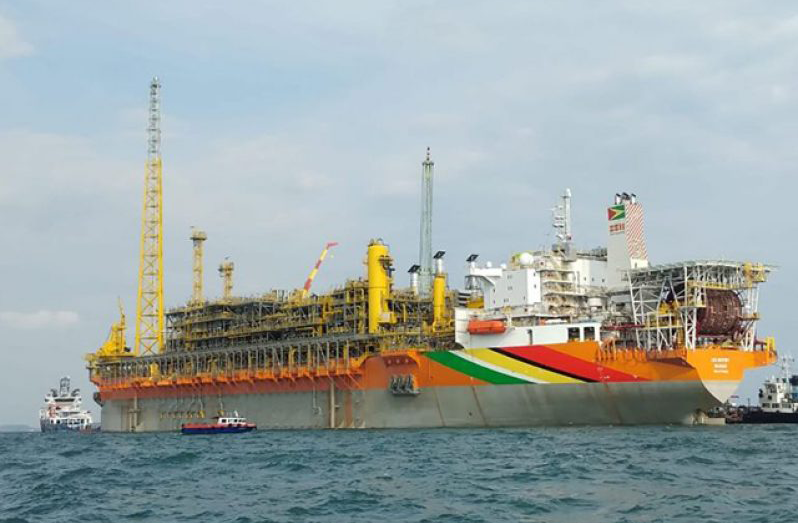— to facilitate further repairs to flash gas compressor
IN conducting final checks on the recently re-installed flash gas compressor at the Liza Destiny Floating Production Storage and Offloading (FPSO) vessel, offshore Guyana, ExxonMobil encountered another issue, which has since forced the oil giant to slash its production temporarily by at least 75 per cent.
According to information from ExxonMobil, its regular daily production of about 120,000 barrels has been reduced to 30,000 per day, a decrease of 90,000 barrels.
“We have reduced production to a minimum level that mitigates formation of hydrates in subsea systems, maintains gas injection and fuel gas to the power generators, and minimises flare,” ExxonMobil’s Public and Government Affairs Adviser, Janelle Persaud, said in an official update, on Tuesday.
According to Persaud, production was reduced significantly because the company encountered problems related to the discharge silencer, which is a component of the recently re-installed flash gas compressor.
The compressor was damaged in January and resulted in the company having to temporarily increase gas-flaring above pilot levels in order to maintain safe operations. The faulty contraption was subsequently removed and sent to Germany for immediate repairs.
The repaired and upgraded components of the flash gas compression system have been safely re-installed, but a comprehensive three-phase testing programme was undertaken to ensure full safety. It is during the final stage of the three-phase testing programme that the company encountered a problem with the discharge silencer. A discharge silencer is used to attenuate noise produced by the expansion of air, steam or gas at elevated pressure to atmospheric pressure.
As part of efforts to rectify the issue, a team from SBM Offshore, MAN Energy Solutions and ExxonMobil are on site assessing repairs, with support from engineering experts in Europe and the USA.
Persaud said too that relevant government agencies have been notified and ExxonMobil is continuing to work with officials to determine the next best step.
“ExxonMobil Guyana is extremely disappointed by the design issues and continued underperformance of this unit, and will be working with the equipment manufacturer MAN Energy Solutions and the vessel’s operator, SBM, to rectify the situation. This performance is below ExxonMobil’s global expectations for reliability,” Persaud related.
Should there be no immediate remedy to the situation, Guyana’s next oil lift, its sixth, which is expected in a matter of days, could be delayed. This is the case because lifts are done every eight-nine days, and, with production levels low, meeting the quota of just about one million barrels could take longer than expected.
It was early March that Guyana benefitted directly from its petroleum sector, receiving US$61,090,968 (approximately GYD$13B) from the sale of the nation’s fifth oil lift. The fifth lift was sold to New York-based Hess Corp, which in turn vended the local crude to HPCL-Mittal Energy Ltd (HMEL), a joint venture between State-run Hindustan Petroleum Corp and Indian steel tycoon LN Mittal.
It was reported that HMEL operates a 226,000 barrels per day ‘Bathinda’ refinery in the northern state of Punjab.
Prior sales of local crude, particularly the first three, went to a trading arm of Shell on a dated ‘Brent’ basis.
Guyana, new to the petroleum sector, sold its first one million barrels of crude on February 19, 2020, raking in nearly US$55 million. In its second million-barrel sale, the country received US$35 million, US$46 million as proceeds from the sale of its third million-barrel of crude, and US$49.3 million from its fourth oil lift.
Based on a consolidation of all the lifts to date, the country has sold 5,009,797 barrels of oil valuing US$246,542,662.
Along with the earnings from the oil lifts and over US$21 million in royalties and interest, Guyana has close to US$267,668,709 in its NRF, at the U.S. Federal Reserve Bank. Under the Production Sharing Agreement (PSA), Guyana receives two per cent royalty and 50 per cent profit oil, which is what remains after the producer recovers the production cost.



.jpg)











